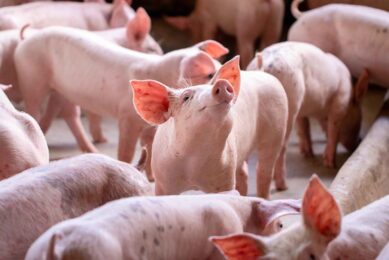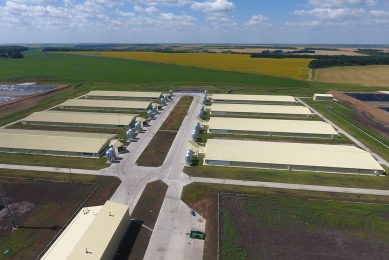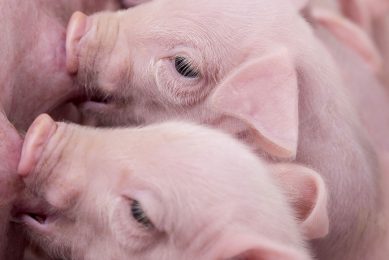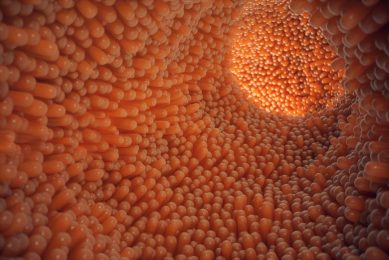Feed holds the key to a healthy young animal gut
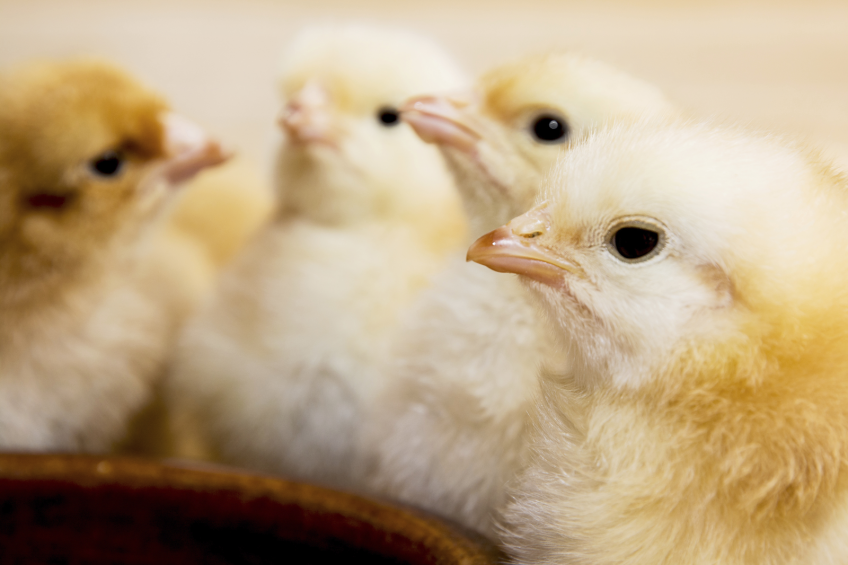
Ensuring that the gut is healthy is critically important for all of life’s activity, since all nutrients must of course be absorbed through the gut. The right raw material choice therefore, limits the growth of pathogenic bacteria in young livestock animals.
The gut is the single largest immune related organ of the body and is the primary barrier between a bacterial milieu and the body per se. This barrier balances the need to support entry of nutrients through the gut wall while blocking the entry of microbes. This balance can be affected both positively and negatively by the composition of the diet along with the exposure of the body to pathogenic challenges. Young animals experience a tremendous change in gut size and function in order to support the required absorption of nutrients with the development of size, enzymatic production and function, along with establishment of a microflora population that supports the normal functions of the gut.
Vulnerability from birth
Intestinal microbial population establishment occurs in all species as the animal is born or hatched and is then exposed to environmental populations of bacteria that ultimately become established within the gut as the commensal population for the animal. The development of a ‘normal’ gut microbial community will ultimately buffer the animal from the onslaught of pathogenic microbes throughout life.
The consequences of poor microbial population establishment include a compromise in the animal’s ability to resist pathogenic microbial attack and/or the ability to even function properly. This can be seen when the animal is exposed to dietary challenges that may normally be associated with a mild or even unseen perturbance but which without a properly established microbial population may result in diarrhoea challenges without the presence of any pathogen. Ultimately, the establishment of a complex and diverse microbial population within the gut, buffers the animal from dietary and environmental challenges. Anything that affects the intestinal epithelium such as intestinal pathogens will result in an impaired feed utilisation, and often treatment with antibiotics to manage these challenges. In addition to that, immune responses and the repair of tissue costs energy and other nutrients, consequently affecting the performance. Many raw materials used in feed production bring a mix of positive and negative aspects that must be managed appropriately to result in a final feed that can be tolerated well by the animal. Hamlet Protein, has worked intensively with the anti-nutritional factors (ANFs) found in soy products to find solutions for piglet and young broiler diets.
Gut health in piglets
Creep feeds and weaning diets/pre-starters have always been given a lot of attention as raw material selection is very important, especially with regards to gut health. Nutrient requirements of the pig are not dependant on raw material selection. Then why is it of great importance to carefully pick the right raw materials and not just leave it to the least cost program to pick the cheapest raw material sources of nutrients? It is, of course, because all the potential effects of an ingredient are not described by its simple nutrient composition. The proximate analysis of an ingredient merely describes the useful nutrients to help fill out the matrix in the formulation, but often does not describe the ‘negative’ aspects that can be in the raw material. Selecting a specific ingredient for its known usefulness in a pre-starter or creep feed is a way to de-select some of the properties compromising gut health in the young pig.

ANFs associated with specific raw materials can impact the gut in several ways. Antigenic proteins like β-conglycinin can influence the immune response of the gut allowing for the proliferation of some pathogenic bacteria. In another example, galacto-oligosaccharides such as stachyose and raffinose from soy products, can be used by pathogens as a nutrient source allowing for proliferation of the pathogen in the gut. This shows that the same soy raw material can allow for pathogen proliferation by two separate mechanisms.
Furthermore, poor quality fish meal can contain significant quantities of non-protein nitrogen (NPN) from bacterial breakdown of fish offal prior to heat process. These sources of NPN can provide nitrogen to the hind gut and have been associated with the proliferation of pathogens including Lawsonia intracellularis leading towards increased ileitis concerns. Many other raw materials can have similar challenges which must be managed within the formulation process. Alternatively, raw materials can have a positive impact on the function of the gut. Some sources of dietary fibre can be protective. Ajay Awati (2013) describes how adding readily fermentable polysaccharides to piglet feeds without antibiotic growth promoters, can reduce the microbial breakdown of amino acids and deamination of amino acids in the small intestine.
Gut health in young broilers
Inflammation of the gastrointestinal tract in broilers is another major physiological problem caused by ingestion of poorly designed feed. The cause is typically ANFs, such as antigens, lectins, phytate, oligosaccharides and trypsin inhibitors, resulting in physiological stress for the bird. ANFs such as phytate, oligosaccharides or trypsin inhibitors are responsible for physiological diarrhoea, mostly in the form of mucin providing some nutrients to intestinal bacteria. Mucin is an important source of carbon, nitrogen, and energy for some commensal and pathogenic bacteria playing an important role in enteric disease and health.
Poor protein digestion by pepsin in the gizzard results in less efficient digestion by trypsin and chymotrypsin in the duodenum. The best way to overcome this problem is to stimulate the gizzard so that it functions in a normal manner by including minimal amounts of favourable fibres in the diet. As with piglets, care should be taken to ensure indigestible components do not become substrate for less beneficial, toxin-producing bacteria, such as Salmonella, Campylobacter, E. coli and Clostridia.
Fibres are mainly utilised in the hind gut (i.e. caeca, rectum and the colon). Feeding soluble fibre alters the rate of faecal passage, microbiota, metabolites, and efficacy of digestion allowing commensal bacteria in the large intestine to utilise fibre as a source of energy. This will result in an increased microbial metabolism and microbial population growth. Bacteria produce short chain fatty acids such as acetate, butyrate and propionate during the metabolism, causing increased bacterial populations, which is one of the reasons why enteritis occurs.
Finding the ‘overlooked factor’
A major impact on gut health through microbial activity is also caused by an often overlooked factor. Where digestibility is used as a tool for calculating available nutrients to the animal, the other part of the ingredient, the part that does not get digested will end up as nutrients for bacteria in the hind gut. With an established stable microflora in the large intestine of older animals, this can be controlled by the gut itself. But in a newly weaned piglet or newly hatched chick the microflora is still struggling to find a balance and an influx of undigested nutrients will upset the balance and cause proliferation of bacteria, often pathogenic/toxin producing bacteria. This makes digestibility not only a calculation tool but a valuable quality parameter, which especially in the case of young animals, should not be overlooked.
References available upon request



